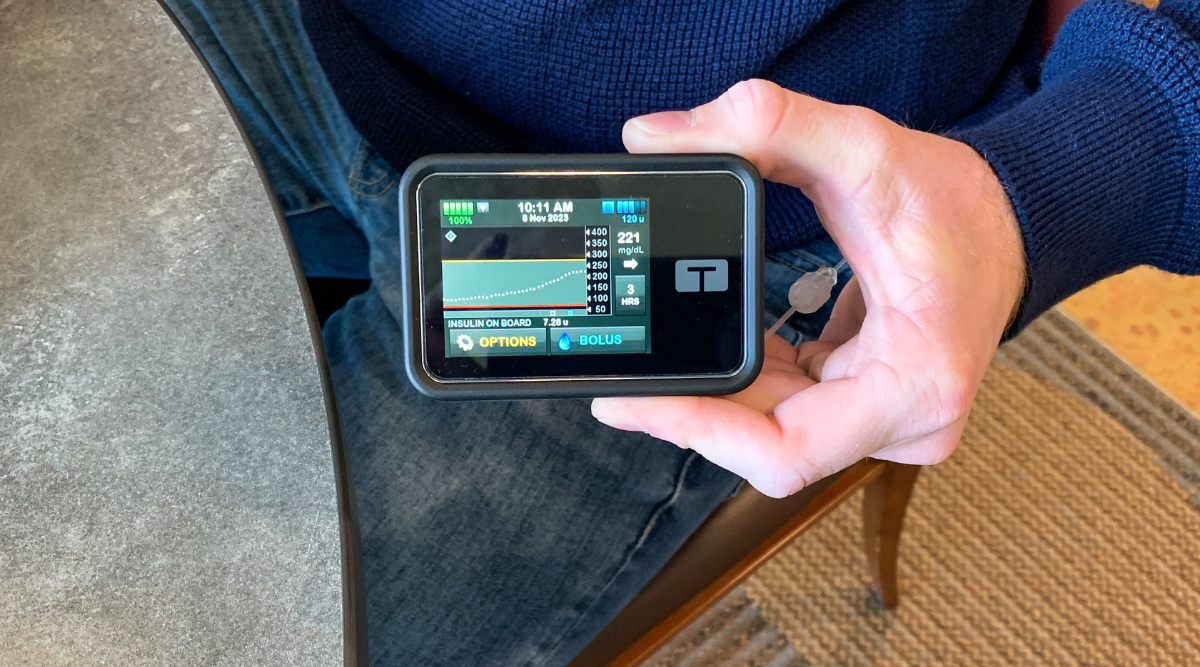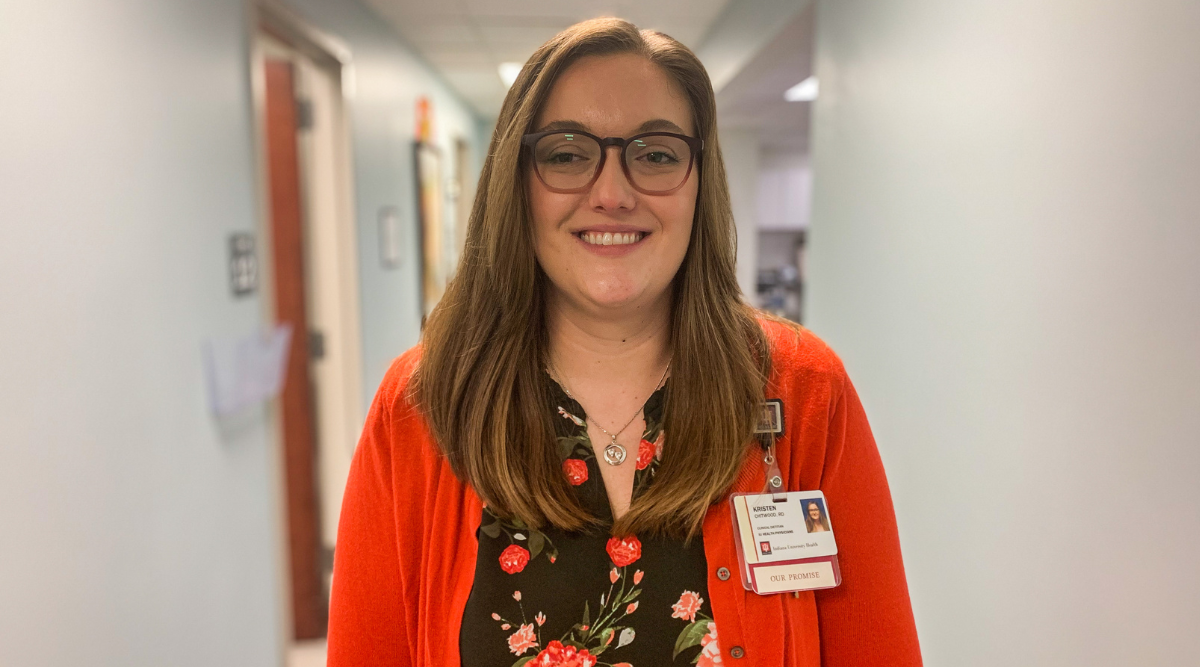By Emma Avila, epackard1@iuhealth.org, writer for IU Health’s Indianapolis Suburban Region
Bradley Kruszynski has had type 1 diabetes his whole life. When he decided to change insulin pumps, the team at IU Health West helped him navigate the transition.
Bradley Kruszynski doesn’t know what it feels like to live life without diabetes. He was diagnosed with type 1 diabetes when he was 16 months old.
Type 1 diabetes is a chronic condition in which the body cannot produce insulin—a hormone that enables cells to absorb, use or store glucose (blood sugar), the body’s key energy source. In the absence of insulin, glucose builds up in the bloodstream, where it can damage the vessels and eventually cause problems such as heart disease, kidney disease and blindness.
“I was sick for a while,” he says. “My dad brought [diabetes] up to my pediatrician and I was diagnosed.”
Kruszynski spent some time after diagnosis at Riley Hospital for Children, where he was put on insulin.
When he was around three years old, he was put on his first insulin pump, a device that is attached to the body, which infuses insulin rather than giving injections.

“Being diabetic is nothing new or abnormal for me,” he says. “It’s been who I am.”
Since he was young, Kruszynski has relied on his insulin pump to help regulate his blood sugar. However, as technologies evolved and new options became available, he decided to switch to a new pump in September 2023.
After letting his endocrinologist at IU Health West, Dr. Michael Morkos, know his decision to switch, Kruszynski was connected with someone who could help him learn about the new device.
Kristen Chitwood is a clinical dietician who works as a diabetes educator, primarily at IU Health West.
As someone who also has type 1 diabetes, Chitwood has a passion to help improve the lives of others trying to navigate their diabetes.

“We do a lot of different types of education,” she explains. “We see all different types of diabetes. We also teach people about their diabetes technology.”
“I spent three or four hours with her,” Kruszynski adds. “She walked me through every single step, no matter how small it was.”
The new pump has features his former pump did not, including a sensor that automatically measures his glucose and adjusts insulin doses off the glucose value. Before, he had to stick his finger to check his blood sugar levels.
Chitwood followed up with Kruszynski a couple of days after he received his new pump. Though he hadn’t had any issues, it was a comfort to know he had someone to help if any complications arose.
“Say I can’t get my blood sugar to stay stable, I know I can email or make an appointment,” he says.
For Kruszynski, he hopes that sharing his story will help educate others about what it is like to live with type 1 diabetes.
“I just want people to see the normalcy of it,” he says. “I can’t get rid of it. I can’t quit.”
Learn more about Type 1 diabetes and the resources available at IU Health here.
